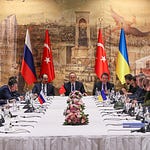The Freedom Convoy had the unusual side effect of making Canada a hot topic in the New York Times for several weeks. Among the many pieces on the protests, the essays by Ross Douthat and Michelle Goldberg are worth signaling out. Both tried to provide empathetic portraits of the protesters, each of which downplayed the explicitly seditionist and bigoted ideology of the organizers and highlighted more inchoate social and economic anxieties.
Douthat in particular used the protest as a springboard for a novel class analysis:
To quote the pseudonymous writer N.S. Lyons, the trucker protests have sharpened a division between “Virtuals” and “Practicals” — meaning the people whose professional lives are lived increasingly in the realm of the “digital and the abstract,” and the people who work in the “mundane physical reality” upon which the virtual society still depends.
This division is not always one of money: Plenty of Practicals do very well for themselves while plenty of Virtuals scrape along on, say, graduate-student stipends or middling think-tank salaries. But the class divide between the two categories is clear, and so is the gap between their respective influence over the central nodes of Western power.
Frequent guest Doug Bell and I decided to look at the Times coverage of the Freedom Convoy and the larger meaning of the event. What did the paper get right and where were they off base? Do centrist institutions and media understand the nature of the far right? What is missing from the conversation and what issues are being ignored?
(Post edited by Emily M. Keeler)
Share and Subscribe
If you enjoyed this podcast, please share:
Or subscribe:















Share this post